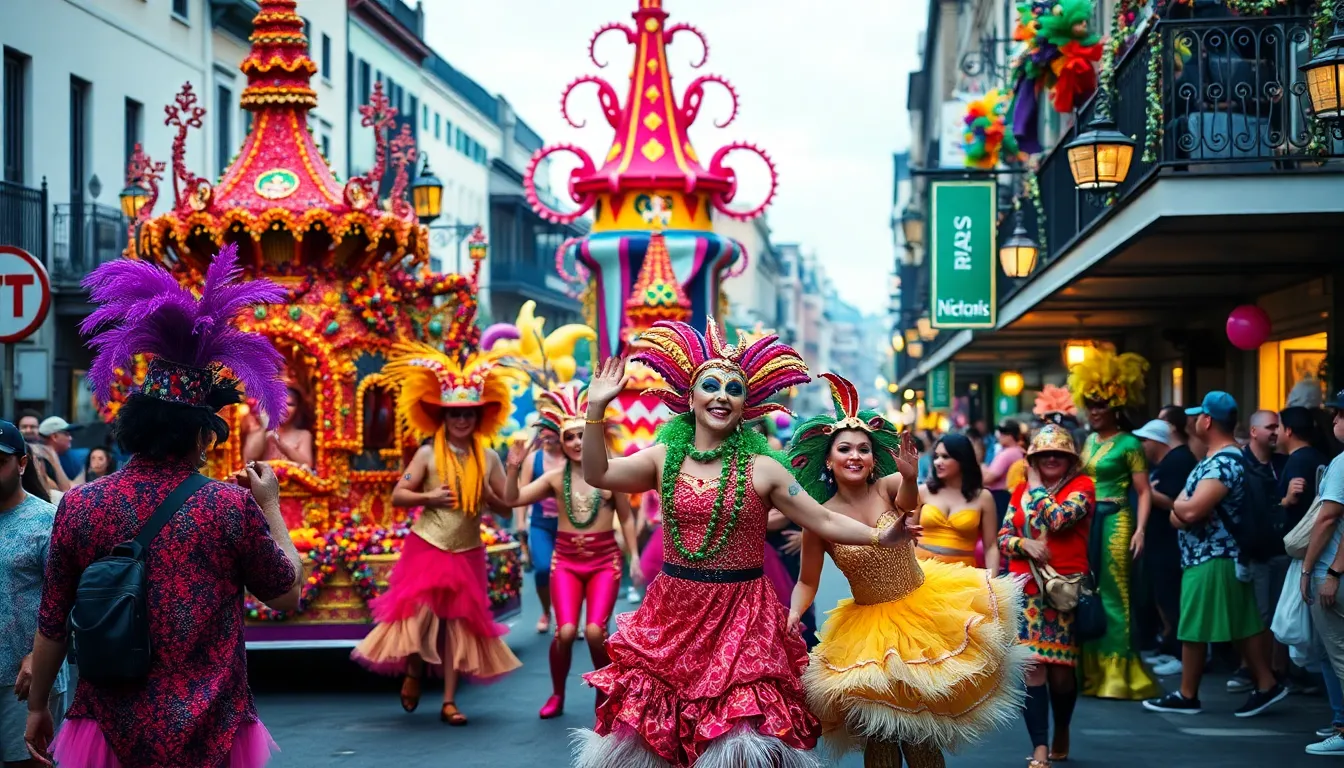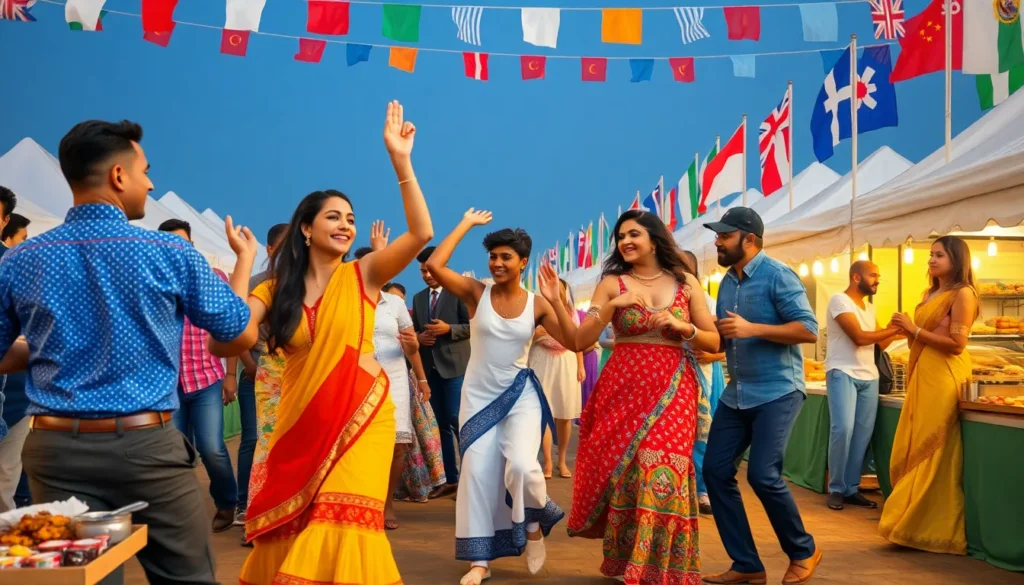Table of Contents
ToggleFrom vibrant festivals to unique culinary delights, world culture offers an endless array of experiences that captivate the senses. Each region boasts its own traditions, art forms, and social practices, showcasing the rich tapestry of human expression. Exploring these cultural highlights not only broadens horizons but also fosters appreciation for diversity.
As travelers and enthusiasts delve into the customs of different societies, they uncover stories that transcend borders. Whether it’s the rhythmic beats of African drumming or the intricate designs of Asian textiles, every cultural element tells a story of heritage and identity. This exploration of world culture invites readers to celebrate the beauty of global interconnectedness and the shared experiences that unite us all.
World Culture Highlights Overview
World culture thrives on diversity, showcasing a vast array of experiences across various regions. Festivals, for instance, serve as vibrant expressions of cultural heritage, featuring unique traditions, music, and costumes. Events like Carnival in Brazil and Diwali in India draw millions, highlighting local customs while fostering global connections.
Culinary traditions also reflect cultural richness. Unique dishes, such as sushi from Japan and paella from Spain, not only satisfy palates but also tell stories of geography and history. Each cuisine emphasizes local ingredients, cooking techniques, and cultural practices, enhancing appreciation for global flavors.
Art forms play a critical role in celebrating identity. Traditional crafts, contemporary art, and performance arts convey the spirit of communities. From the intricate designs of African textiles to the captivating dances of Native American tribes, these artistic expressions foster understanding and connection among individuals.
Engaging with diverse cultures broadens perspectives. It encourages understanding of the interconnectedness of global societies. Each cultural element offers insights into human experiences, reinforcing humanity’s shared values while celebrating its complexity.
Regional Highlights

Regional cultures around the world showcase unique traditions, artistic expressions, and culinary delights. Each area presents a distinct perspective on heritage and identity.
African Culture Highlights
African cultures represent a rich tapestry of traditions and practices. Key highlights include:
- Festivals: Events like the Harare International Festival of the Arts in Zimbabwe celebrate music, theater, and dance.
- Cuisine: Dishes such as jollof rice from West Africa and biltong from Southern Africa reflect local flavors and histories.
- Art: Traditional crafts like beadwork and pottery demonstrate skill and cultural significance, seen in various regions.
Asian Culture Highlights
Asian cultures embody a wide range of customs and beliefs. Notable aspects include:
- Festivals: Celebrations such as the Lantern Festival in China and Holi in India emphasize community and joy.
- Cuisine: Foods like pho from Vietnam and pad Thai from Thailand highlight regional ingredients and cooking techniques.
- Art: Artistic practices like Japanese calligraphy and Indian classical dance showcase deep cultural narratives.
European Culture Highlights
European cultures provide a blend of history and innovation. Key features include:
- Festivals: Events like Oktoberfest in Germany and La Tomatina in Spain draw crowds for food, drink, and revelry.
- Cuisine: Iconic dishes such as pasta in Italy and pastries in France reflect culinary excellence and local ingredients.
- Art: Renowned movements like the Renaissance and Impressionism have left a lasting impact, seen in museums across the continent.
North American Culture Highlights
North American cultures are characterized by diversity and innovation. Important elements include:
- Festivals: Celebrations like Mardi Gras in New Orleans and Pow Wows among Native American tribes highlight cultural expression and heritage.
- Cuisine: From barbecue in the Southern U.S. to poutine in Canada, regional dishes offer a taste of local traditions.
- Art: The contemporary art scene showcases influences from various cultures, with street art and indigenous works gaining prominence.
South American Culture Highlights
South American cultures reflect a melding of indigenous and colonial influences. Key highlights include:
- Festivals: Events such as Carnaval in Brazil and Inti Raymi in Peru celebrate history through music and dance.
- Cuisine: Dishes like ceviche from Peru and empanadas from Argentina showcase fresh ingredients and regional flavors.
- Art: Craftsmanship, from Andean textiles to Brazilian samba, highlights the creativity and heritage of diverse communities.
Oceanic Culture Highlights
- Festivals: Events like the haka in New Zealand and the Festival of Pacific Arts celebrate cultural heritage and artistic expression.
- Cuisine: Traditional foods such as taro and seafood dishes reflect local resources and lifestyles.
- Art: Indigenous art forms, including carving and weaving, honor ancestral practices and storytelling traditions.
Notable Cultural Practices
Cultural practices across the globe showcase the diversity and depth of human expression. These practices include vibrant festivals, unique arts and crafts, and rich culinary traditions.
Festivals and Celebrations
Festivals and celebrations serve as vibrant expressions of cultural identity. Events like Carnival in Brazil highlight lively parades, elaborate costumes, and samba music, attracting millions of participants and viewers. In India, Diwali, known as the Festival of Lights, celebrates the triumph of light over darkness with fireworks, rituals, and shared meals. The Harare International Festival of the Arts in Zimbabwe celebrates regional talent, while the Lantern Festival in China symbolizes reunion and family bonds through stunning displays. Each celebration encapsulates local customs, fostering connections among participants and spectators.
Traditional Arts and Crafts
Traditional arts and crafts reflect cultural heritage and community values. African beadwork showcases intricate designs that often convey social status, identity, and cultural history. Japanese calligraphy, or shodo, illustrates the beauty of written language, emphasizing discipline and artistic expression. Native American craftsmanship features pottery and textiles incorporating symbolism and storytelling, preserving ancestral traditions. European artisans produce ceramics and glasswork that blend functionality with artistic design, highlighting historical significance. These art forms not only preserve tradition but also create a sense of belonging within communities.
Culinary Traditions
Culinary traditions illustrate a culture’s history, geography, and social practices. Japanese sushi, with its precision and regional variations, showcases fresh ingredients and culinary artistry. Spanish paella, a dish rooted in Valencia, brings together rice, saffron, and a variety of seafood or meats, symbolizing community and shared meals. Jollof rice from West Africa integrates flavors and cooking techniques, reflecting diverse cultural influences. Pho from Vietnam combines herbs, spices, and broth to offer a warm, communal dining experience. Each dish serves as a narrative, revealing the essence of the culture and its people’s way of life.
Impact of Globalization on Culture
Globalization significantly impacts culture, blending traditions and creating new cultural expressions. Influences can be observed in various aspects, including language, cuisine, art, and social practices.
- Language Evolution: Globalization promotes the spread of languages, leading to the emergence of hybrid languages and dialects. English serves as a global lingua franca, facilitating communication among diverse populations.
- Culinary Fusion: Culinary traditions intertwine, resulting in innovative fusion cuisines. Dishes such as California rolls blend Japanese sushi with American flavors, reflecting a global palate.
- Art and Entertainment: Art forms evolve, incorporating styles and techniques from different cultures. Examples include K-pop, which merges traditional Korean music with Western influences, appealing to international audiences.
- Cultural Exchange: Global connectivity fosters cultural exchange, allowing individuals to participate in global festivities. Events like Holi, celebrated worldwide, enrich local traditions by incorporating diverse customs.
- Identity and Homogenization: While globalization encourages cultural sharing, it can also lead to homogenization. Traditional practices may diminish as global trends dominate local customs, posing a challenge to cultural identity.
- Technology’s Role: Digital platforms enable the rapid dissemination of cultural content, allowing artists and creators to share their work globally. Social media allows cultures to interact and influence each other quickly, breaking down geographical barriers.
Globalization transforms and enriches cultures, promoting both diversity and challenges.
Exploring world culture reveals a vibrant tapestry of traditions and expressions that connect people across the globe. Each festival culinary delight and art form contributes to a deeper understanding of humanity’s shared values. The interplay of local customs and global influences enriches cultural experiences while fostering appreciation for diversity.
As individuals engage with these cultural highlights they not only celebrate uniqueness but also embrace the interconnectedness of societies. This journey through world culture encourages curiosity and respect for different ways of life ultimately enhancing the global community’s collective identity.







